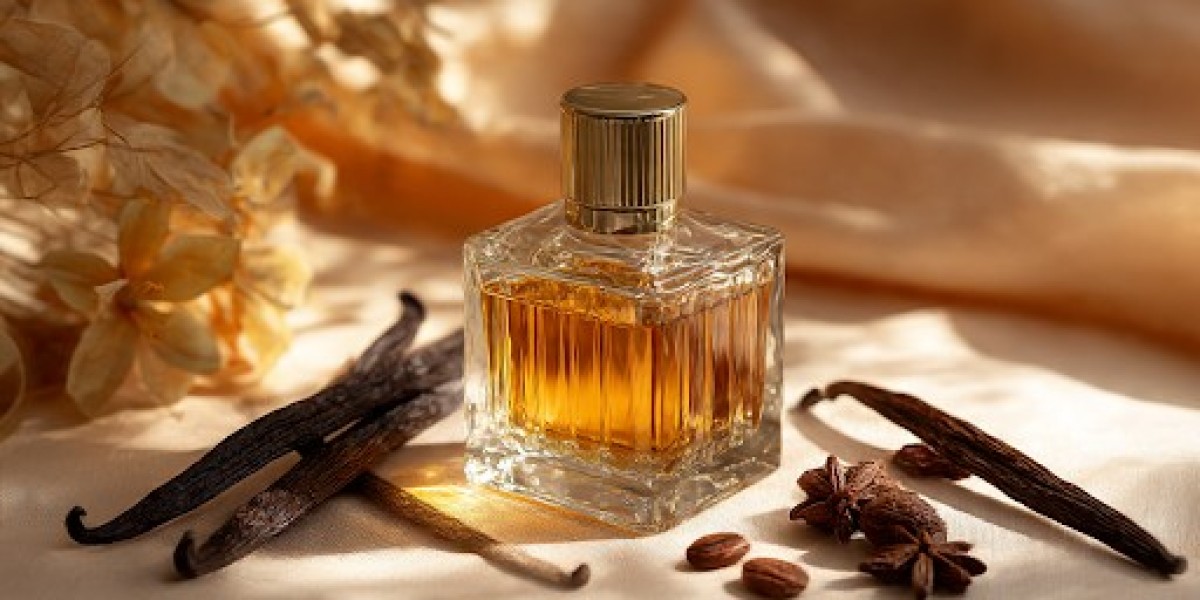Tonka bean comes from the seeds of the Dipteryx odorata tree, native to Central and South America. After harvesting, the beans are dried and cured to produce coumarin—a naturally occurring compound with a rich, warm aroma reminiscent of vanilla, almond, cinnamon, and a touch of hay.
This complex scent profile makes tonka bean fragrance incredibly versatile. It adds depth, sensuality, and sweetness without being overpowering. Perfume houses often use it as a base note, where it acts as a binder that enhances other ingredients, particularly in oriental, gourmand, and woody fragrances.
The Rise of Tonka in Modern Perfumes
Once considered a supporting note, tonka bean has grown in popularity as a star player in many designer and niche fragrances. Perfume lovers are drawn to its comforting yet mysterious aroma. It’s become especially prominent in Impression de Parfum scents and luxury extrait blends, where bold base notes are more pronounced.
Popular men’s and unisex fragrances featuring tonka bean include:
Tom Ford Tobacco Vanille – Tonka adds a creamy sweetness to tobacco and spice.
Guerlain Tonka Impériale – A luxurious, almost edible experience centered around the bean.
Jean Paul Gaultier Ultra Male – Where tonka balances fruity sweetness with spicy masculinity.
Dior Homme Intense – Blends iris and tonka bean for a powdery, seductive dry-down.
These are just a few examples of how tonka bean can shape the identity of a fragrance. Whether subtle or dominant, it often creates a long-lasting and enveloping scent trail.
Understanding the Types of Perfume Oils
To truly grasp how tonka bean interacts in fragrances, it's helpful to understand the types of perfume oils commonly used:
Essential Oils
Extracted directly from natural sources like flowers, leaves, or resins. While tonka itself is not distilled into a traditional essential oil, its active compound, coumarin, is often extracted or synthesized for use in perfume oils.Absolutes
These are highly concentrated, aromatic oils obtained through solvent extraction. Tonka bean is often processed into an absolute for perfumery use.Synthetic Aromachemicals
Modern perfumery often uses lab-created molecules that mimic natural scents. Coumarin, the primary scent molecule in tonka bean, is now widely synthesized, offering greater control and safety.Carrier Oils
Used primarily in oil-based perfumes, carrier oils like jojoba or fractionated coconut oil dilute essential or absolute oils without altering the scent significantly.
Tonka bean, whether natural or synthetic, plays well with a variety of these oils. In oil-based perfumes and Impression de Parfum blends, it often provides a creamy, smooth base that enhances longevity and richness.
Impression de Parfum: A Tonka Lover’s Paradise
If you love tonka bean fragrances, Impression de Parfum is a category worth exploring. These are high-quality, affordable alternatives inspired by popular designer scents. While they are not exact replicas, many are skillfully blended to mirror the character and heart of their inspirations.
Because Impression de Parfum formulas are often oil-based or contain high concentrations of perfume oils, tonka bean can really shine. The creamy sweetness of the bean lingers longer on the skin, and its complexity unfolds over hours.
You can buy Impression de Parfum online from many reputable sellers who specialize in long-lasting perfumes. Be sure to look for reviews, ingredient transparency, and oil concentration before purchasing. Some popular online platforms also let you sample before committing to a full bottle.
How to Identify Tonka Bean in a Fragrance
New to identifying tonka bean in a scent? Here are a few tips:
Smell the dry-down: Tonka usually appears in the base notes. After the top notes fade (usually citrus or floral), wait 30–60 minutes and see if a sweet, slightly nutty or almond-like warmth emerges.
Compare fragrances: Try two perfumes—one with tonka, one without—to train your nose to spot the difference.
Look for similar notes: Tonka often pairs with vanilla, amber, sandalwood, tobacco, and spices.
Once you can recognize it, you’ll notice it everywhere—in both men’s and women’s fragrances, from designer to indie.
Why You Should Try Tonka-Based Perfumes
Still not sure if tonka bean is for you? Here’s why it’s worth a try:
Seasonal Versatility
Tonka bean works beautifully in fall and winter perfumes due to its warm, enveloping aroma. However, when blended lightly with florals or citrus, it can also be worn in spring and summer.Unisex Appeal
Though found in many masculine scents, tonka bean also complements feminine florals and gourmand perfumes, making it a versatile note in unisex and gender-neutral fragrances.Layering Potential
Tonka-based fragrances layer well with others. Try combining a woody scent with a vanilla-heavy tonka perfume for a personalized blend.Longevity
Fragrances with tonka bean tend to last longer due to the strength and density of the base note. When paired with high-quality perfume oils, it creates a scent that stays with you all day.
Final Thoughts
Tonka bean may not get the spotlight like oud or rose, but its contribution to modern perfumery is undeniable. It adds depth, smoothness, and subtle complexity to everything it touches. From classic designer scents to Impression de Parfum creations, the tonka bean fragrance is everywhere—and for good reason.
Whether you're experimenting with different types of perfume oils or exploring how to buy Impression de Parfum online, keep an eye (and nose) out for tonka. It just might become your next signature scent.








